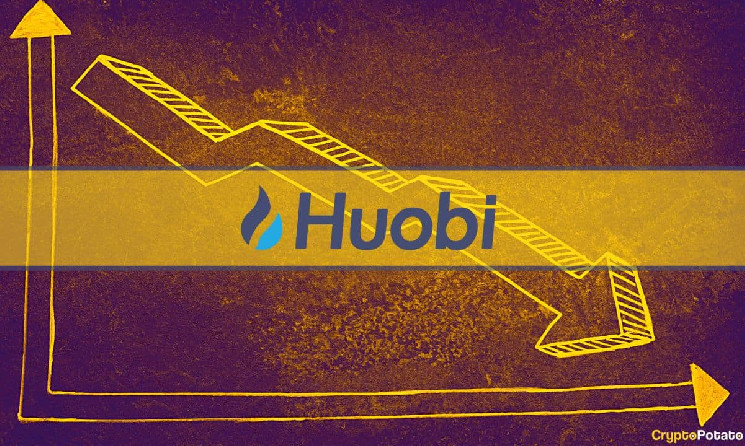Seychelles-headquartered crypto exchange – Huobi Global – has been in trouble for quite some time now, which has translated into losing significant market share. The company has been mired in controversy for allegedly shutting down internal com and feedback channels and canceling various employee benefits, among other things. Its market share is also under threat from rival companies.
According to the latest study by data provider Kaiko, Huobi’s market share declined from 22% in 2020 to a mere 4% by 2022-end, thereby making it the biggest loser of the crypto bear market. Huobi’s quarterly revenue also fell by almost 98% since 2021 Q2.
Huobi in Trouble
The crypto industry is still reeling after the spectacular fallout of the FTX empire, and the community is wary of more adverse developments around other high-profile participants. Huobi, too, is the latest to see a crisis in confidence.
Over the past week alone, it recorded outflows of more than $100 million in token outflows amidst insolvency concerns. Tron Founder Justin Sun, who is a major shareholder of the crypto exchange, transferred around $100 million worth of total of USDC and USDT from Binance to Huobi to boost confidence.
The USDD depeg also turned out to be an Achilles’ heel for Sun’s crypto empire. For context, USDD, issued by the Tron DAO Reserve, aims to stabilize exchange rates for stablecoins issued on the TRX blockchain. The depeg was triggered by the FTX collapse, and since then, it has continued to hover below the $1 mark.
Despite USDD being claimed to be backed with a collateral ratio of over 200% in combination with Tron, Bitcoin, USDC, and USDT, it has failed to regain its peg. At the time of writing, USDD was trading around $0.97.
Kaiko’s research stated,
“When looking at USDD-USDT order books, which is the highest volume trading pair, we can observe that market depth on the bid and ask side has been persistently imbalanced since early December.”
Increasing FUD
It was also found that the ratio of bids to asks was under 1 for most of the past month, a trend that was indicative of a heavy sell pressure that is dragging the price down. The ratio did see minor improvement since the beginning of the year, with the bid/ask ratio climbing above 1, thereby suggesting that more bids were placed on order books.
A switch in current sentiment will only be prompted if a shift in order book structure transpires. In fact, Kaiko’s research stated that USDD can still regain its peg. But this isn’t the case for Huobi, which continues to face an “uphill challenge in regaining market share.”
Sun recently confirmed that Huobi slashed its workforce by 20% in a bid to cope with mounting losses. The exchange will undergo “structural adjustment,” expected to conclude by the first quarter of this year.
 cryptopotato.com
cryptopotato.com
